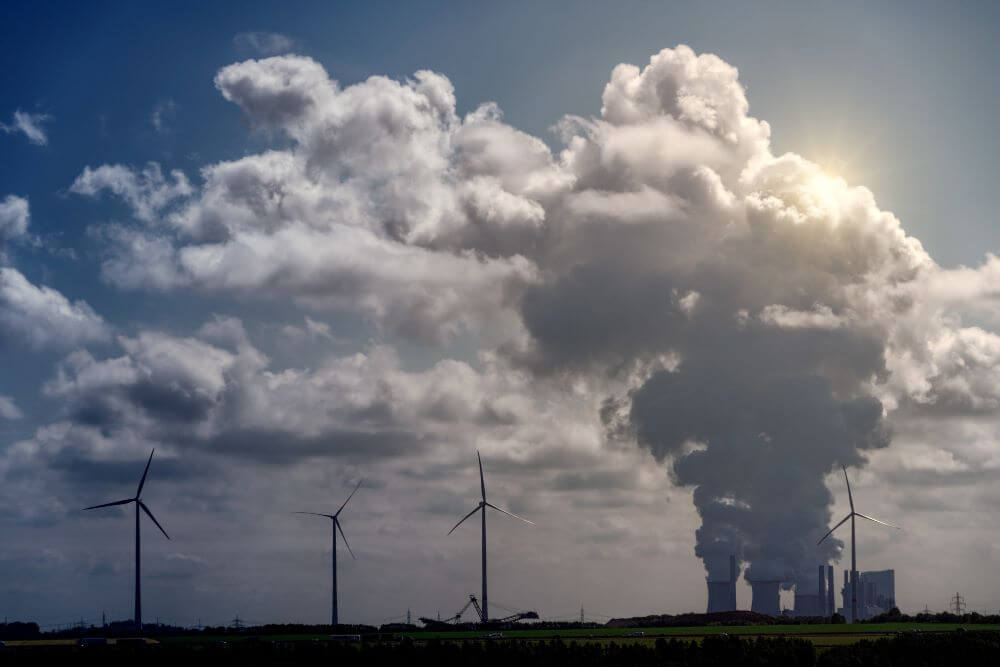For the past few decades, the idea of transitioning North American energy production from a primarily fossil fuel-based model to a more eco-friendly model has been de rigeur in certain circles. As early as the 1980s, scientists, politicians, and many members of the media urged a wholesale transformation to green energy, with warnings of the hazards of large-scale carbon emissions from fossil fuels to the climate.
The Current Energy Landscape in 2025
But as we enter 2025, we still do not have the green energy infrastructure in place to meet the energy needs of North America. Wind farms, solar plants, and geothermal energy production have yet to yield anything close to the kind of power needed to meet demand. Hydroelectric energy generation is the most promising of all the green options, but it is dependent on favorable geography, and as a result, only puts a small dent in our collective energy needs. There is always the nuclear power option, but there are exponentially greater risks to the environment if things go wrong. Nuclear power is an important contributor to the grid, however, supplying roughly 10-20% of all electricity generated in North America—a sizable portion, but nowhere near enough on its own.
The Reality of Fossil Fuel Dependence
So the fact is, we need fossil fuels to meet consumer demand. According to the most recent data, fossil fuels account for 84% of U.S. energy production. In Canada, the number is slightly smaller, but still hits a whopping 73%. With numbers like these, there is no denying that we will be dependent on oil, gas, and coal for the foreseeable future.
Striking a Balance in Energy Production
There is also no denying that a balance must be reached when it comes to our methods of producing energy in North America. Being too heavily reliant on any single power source is a distinct strategic disadvantage. To offset that risk, it makes sense to develop and integrate green energy methods into the larger economy. This integration would be smoother if the ideological extremes of both sides could contribute and co-exist peacefully.
Industry Insights from Alberta’s James Kydd
“It’s already happening,” explains James Kydd, an energy sector executive and well-known voice in Alberta’s booming oil and gas industry. “Our industry is undergoing significant change towards a greener business model, with increasing investments in cleaner technologies such as carbon capture and storage, and coordinated efforts to reduce emissions. We recognize the expanding capacity of green energy sources like wind and solar, but we also know that fossil fuels remain essential for meeting energy demands, and it’s not realistic to expect a rapid transition away from them.”
The Role of Efficiency and Sustainability
Based out of Calgary, Kydd’s more than twenty-year career in the energy sector includes overseeing major infrastructure projects such as the TransMountain Expansion Pipeline and the Coastal GasLink Pipeline. These experiences have provided him with a clear perspective on striking a balance between fossil fuels and green energy. “We’re seeing increasing efficiency in sustainable practices in both industries,” says Kydd. “The oil and gas industry is evolving to be more efficient and cost-effective, right alongside the renewable energy sector. Both of us face our unique challenges. But right now, we need both sources of energy to meet the demands of North America.”
Technological Advancements in Energy Production
Kydd points out that most of the recent technological advancements in fossil fuel extraction and transportation have been designed for increased environmental protection. “Improvements in pipeline safety and emissions reduction technologies have allowed the industry to operate more sustainably—something we’re always working hard to achieve,” he says. “The renewable energy sector is trying to overcome its own set of hurdles, particularly in storage capacity and the logistics of grid integration.”
The Future of Energy: A Hybrid Model
As green energy technologies continue to advance, there is reason to think they will gradually increase their contribution to the energy grid. However, as Kydd notes, “For the time being, fossil fuels remain the main component of our energy mix, and projections indicate that they’ll remain so well into the 2050s, at minimum.”
Kydd believes that a hybrid model will develop organically as renewable energy sources mature. “In the coming decades, we will see more reliance on renewable energy, especially as technology improves and infrastructure develops. But for now, fossil fuels are vital for a stable and reliable energy supply in North America.




